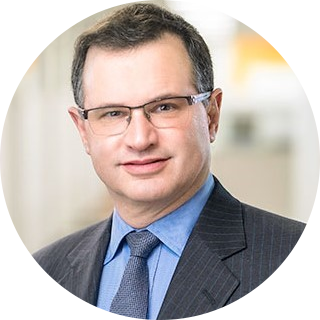August 2, 2023
In 2000, Intuitive Surgical introduced the da Vinci surgical system, which became the first medical robotics system to receive FDA approval for use in minimally invasive surgery. Since then, the market for surgical robotics has experienced continuous growth, reaching an estimated global market value of $6.2 billion in 2022.
Surgical robotics encompasses a wide range of applications in the medical field. These systems enable minimally invasive surgery, assist in complex procedures such as cardiovascular and orthopaedic surgeries, enhance precision and visualisation in neurosurgery and ENT procedures, and serve as a valuable training tool for surgeons.
Robotic systems offer improved surgical outcomes, shorter recovery times, and the potential for remote surgery, thereby expanding access to specialised care.
With ongoing advancements, surgical robotics continues to shape the future of healthcare by providing precise and minimally invasive solutions across various surgical specialties.
Driving Factors Behind the Increased Usage of Surgical Robotics
Rise of Chronic Diseases
The United States is facing a pressing concern with the rise of chronic diseases, as a substantial portion of the adult population is affected by multiple illnesses. Statistics reveal that six out of ten adults grapple with at least one chronic condition, while four out of ten endure the burden of two or more. This escalating prevalence of chronic diseases has contributed to skyrocketing healthcare costs, with an astounding annual expenditure of $4.1 trillion in the United States.
In response to this urgent challenge, surgical robotics has emerged as a promising solution. These advanced robotic systems are increasingly being employed to treat individuals with chronic diseases, offering enhanced accuracy and efficiency. By streamlining surgical procedures, surgical robotics minimise the time patients spend in hospitals, subsequently reducing healthcare expenditure.
This innovative approach not only aids in managing chronic conditions effectively but also addresses the financial strain imposed by prolonged hospital stays, paving the way for more cost-effective and patient-centric healthcare solutions.
An Aging Population
The increase in surgical volumes is linked to the phenomenon of population ageing, which is one of the most profound societal shifts of the 21st century. Projections indicate a substantial rise in the global population aged 60 years or over, more than doubling to reach 2.1 billion by 2050, with the number of individuals over 80 expected to triple to 434 million.
This demographic shift places significant financial strain on healthcare systems as they grapple with the growing number of elderly patients requiring care, consequently impacting national economies. Moreover, an ageing population corresponds to a surge in chronic diseases, leading to increased healthcare expenditures for specialised treatments.
Complex surgeries like joint replacements and cardiac procedures are in high demand, with over 450,000 total hip replacements performed annually in the USA alone. Surgical robotics offer a transformative solution by empowering surgeons to perform intricate procedures with heightened precision and control. This technology enhances surgical outcomes, reduces the need for revision surgeries, and generates overall cost savings.
With an estimated 1,638 surgical robots in use worldwide, surgical robotics alleviate the challenges posed by an ageing population and are projected to experience substantial growth, with a market value anticipated to reach $25.7 billion by 2032, up from $6.2 billion in 2022.
Healthcare Professional Shortages
According to the American Association of Medical Colleges, projections indicate a considerable shortage of anywhere from 54,100 to 139,000 physicians by 2033 due to an ageing population and retirements.
To address this challenge, the emergence of autonomous surgical robots plays a pivotal role. The convergence of 5G networks, advancements in autonomous and artificial intelligence technologies, and the acceleration of telemedicine spurred by the pandemic have created a unique opportunity for healthcare agencies.
Robotic surgical tools capable of assisting doctors remotely in critical procedures or autonomously performing less complex tasks with minimal oversight have the potential to augment human professionals across various capacities.
Advantages of Surgical Robotics
The adoption of surgical robotics in the United States has experienced remarkable growth due to its numerous proven benefits, with the percentage of procedures performed using this technology increasing from 0% to 19% between 2012 and 2018. These advantages encompass faster recovery times and shorter hospital stays.
For example, a study conducted by University College London and the University of Sheffield revealed that patients undergoing robot-assisted bladder cancer removal experienced a 20% reduction in hospitalisation time. By reducing the length of stay (LOS) and complications, robotic surgery can help hospitals decrease overall treatment costs and generate net savings of $1,200 per surgery, as suggested by an expert in the New York Times.
A study carried out at Imperial College London demonstrated that surgical robotics can significantly enhance the accuracy of procedures. The research team examined the impact of Acrobot, a robotic assistant, on patients undergoing partial knee replacement. In a randomised controlled trial involving 27 patients, the group undergoing robot-assisted surgery achieved precise bone alignment within two degrees of the planned position in all cases, while only 40% of conventionally performed surgeries achieved the same level of accuracy.
Moreover, physiotherapy robotics offer hope to paralyzed individuals like Ashley Barnes, who, following a botched spinal procedure in 2014, was told she would never walk again. However, after seven months of using the ReWalk robotic exoskeleton, the first FDA-approved personal robotic exoskeleton, Ashley defied expectations and regained the ability to stand and walk.

Market Growth and Projections
The surgical robotics market is expected to witness substantial growth, with a projected value of $25.7 billion by 2032. The neurosurgery segment, in particular, is anticipated to exhibit the fastest growth rate during this period, highlighting the increasing demand for robotics-assisted procedures in the field of neurosurgery.
Contributing to the expanding growth of the neurosurgery segment are companies like AiM Medical Robotics. As a leading neurosurgical robotics company, they are dedicated to enhancing neurosurgery with precision, automation, and efficiency. Their ongoing development involves a portable MRI-compatible surgical robot designed for both the MRI suite and the operating room. With a mission to improve outcomes for patients with functional brain disorders such as Parkinson’s and epilepsy, as well as cancer, AiM aims to reduce errors and procedure time by up to 50%, leading to potential cost savings for hospitals. Founded in 2018, AiM has raised £3.04 million and represents a promising young company in the industry.
Another notable product making waves in the field of neurosurgery is the Mazor X by Medtronic. This comprehensive system comprises three interconnected components, enabling surgeons to perform precise spine surgeries. With a market capitalization of £92.8 billion as of June 16th, 2023, Medtronic demonstrates its strong presence and commitment to innovation in the neurosurgery landscape.
Market Challenges
Surgical robotics entails notable cost implications encompassing initial acquisition and ongoing maintenance. Moreover, operating these sophisticated systems necessitates specialised training, adding to the financial considerations. Typically, robot-assisted surgeries may incur an additional cost ranging from $3000 to $6000 compared to conventional procedures; nevertheless, these expenditures are often offset by the potential savings derived from reduced hospital stays and fewer complications.
A critical challenge in robotic surgery revolves around movement latency, which denotes the delay between the surgeon’s inputs and the robot’s execution. Although this aspect may not pose significant issues in routine surgeries, it can potentially introduce complications when immediate responsiveness is paramount, as observed in complex procedures like robotic cardiac interventions.
Manufacturers diligently provide comprehensive training programs to surgical teams, acknowledging the learning curve associated with adopting robotic surgical equipment. However, the substantial demands of mastering this technology warrant careful consideration, particularly given the lack of empirical evidence demonstrating substantial long-term improvements resulting from the implementation of robotic surgery.
Another inherent limitation lies in the absence of haptic feedback experienced by surgeons utilising robotic systems, thereby impeding their direct perception of tissue resistance. This lack of tactile information increases the risk of inadvertent injury to adjacent organs. Additionally, the reliance on electrical currents within robotic systems introduces a potential hazard for thermal injuries.
The Talent Behind the Revolution
Who are the innovators behind the growth of the surgical robotics industry? Visionary leaders like Dr. Frederick Moll, Dr. Gregory Fischer, and Geoffrey Martha are shaping the future of surgical robotics, revolutionising procedures, and improving patient outcomes.
Dr. Frederick Moll, a renowned medical entrepreneur and leader in surgical robotics, co-founded Intuitive Surgical and played a pivotal role in developing the da Vinci Surgical System. This innovative robotic-assisted platform revolutionised minimally invasive surgery, enhancing precision and dexterity for surgeons. Under Dr. Moll’s leadership, Intuitive Surgical became a global leader, transforming surgical practices.
Dr. Gregory Fischer, CEO of AiM Medical Robotics, is a pioneer in MRI-compatible surgical robotics, advancing neurosurgery with real-time image guidance. With his research expertise and position as a Professor of Robotics Engineering at Worcester Polytechnic Institute, Dr. Fischer is propelling the field into new territory.
Geoffrey Martha, Chairman and CEO of Medtronic, oversaw the company’s acquisition of Mazor Robotics for $1.64 billion in late 2018, acquiring the Mazor X product in the process. Since becoming CEO in 2020, he has been recognized as a driven and innovative executive, including as a top CEO in healthcare technology by the Healthcare Technology Report and as one of Modern Healthcare’s most influential people in healthcare.
Future Outlook
Several innovative companies are making significant strides in the surgical robotics field, driving the industry forward with groundbreaking work. These visionary organisations are poised to disrupt the status quo and shape the future of surgical robotics.
Vas Medical, established in 2021 by Youxiang Li, is revolutionising vascular interventional surgery through their precise and minimally invasive robotic systems. Their advanced technology enables complex surgeries, reducing risks and promoting faster recovery. With their vascular interventional surgery robot being the first of its kind in China and obtaining regulatory approval, they are reshaping the field of vascular intervention.
KouTech, established in January 2022 under the leadership of CEO Kou Watanabe, is at the forefront of developing ultra-precise surgical robots that significantly enhance the precision and quality of surgical procedures. Their wide range of robots caters to ophthalmic, gastroscopic, and microsurgery applications, spanning diverse medical fields like otolaryngology, neurosurgery, vascular surgery, and plastic surgery.
These advanced robots effectively address hand tremors, alleviate physician fatigue, and streamline the learning process, ushering in a new era of enhanced surgical capabilities.
Great Robotics, founded in 2021 by Shang Gao, has developed the industry’s first “precise image composite guidance” vascular interventional diagnosis and treatment platform, approved for NMPA Class III Certificate in April 2023. This groundbreaking innovation is set to revolutionise the industry by significantly improving the accuracy and effectiveness of vascular interventional procedures.
Conclusion
The emergence of surgical robotics represents a pivotal milestone in the realm of Medtech, signifying a profound paradigm shift. By augmenting precision, elevating patient outcomes, and streamlining surgical processes, these cutting-edge robotic technologies are fundamentally reshaping the healthcare panorama.
As an influx of pioneering companies enters the sector, pushing the boundaries of what is achievable, we anticipate witnessing a continued surge in breakthroughs that will revolutionise surgical methodologies and forge a path toward a future defined by enhanced efficacy and minimally invasive procedures. Undoubtedly, the era of surgical robotics has arrived, poised to deliver a transformative impact on the industry at large.
If you’re interested in further in-depth analysis of the medical devices industry; including deals, key players, trends and challenges from the last year and quarter, you can register interest for our exclusive Market Analysis Report.

Published on 02-08-2023


